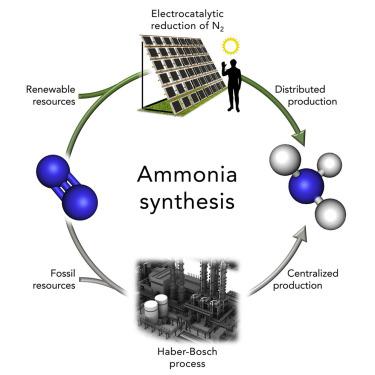Chem ( IF 19.1 ) Pub Date : 2018-11-08 , DOI: 10.1016/j.chempr.2018.10.010 Antonio José Martín , Tatsuya Shinagawa , Javier Pérez-Ramírez

|
The electrocatalytic nitrogen reduction reaction (eN2RR) is an emerging route complementing one of the pillars of the chemical industry, the Haber-Bosch (HB) process. Its flexibility expands suitable operating conditions from highly pure nitrogen and hydrogen streams and high temperature to very mild ones, such as air and water at ambient conditions, which can expand the ammonia synthesis toward the on-site production of carbon-neutral fertilizers when powered, for instance, by sunlight (ammonia artificial leaf). This review uses performance maps to (1) provide a bird's-eye view of the gap separating it from practical implementation and (2) identify sources of inefficiency, mostly associated with the reduced ability of available catalysts to operate with high energy efficiency. In addition, we discuss basic aspects influencing the design of an ammonia artificial leaf and comment on future directions.
中文翻译:

氮的电催化还原:从Haber-Bosch到氨人造叶
电催化氮还原反应(eN 2RR)是一条新兴路线,是对化学工业的重要支柱之一(Haber-Bosch(HB)工艺)的补充。它的灵活性将合适的操作条件从高纯度的氮气和氢气流以及高温扩展到非常温和的操作条件,例如环境条件下的空气和水,这可以将氨的合成扩展到现场供电时碳中和肥料的现场生产,例如,通过日光照射(氨人造叶)。这篇综述使用性能图来(1)提供将其与实际实施分开的空白的鸟瞰图,以及(2)找出效率低下的根源,这主要与可用催化剂在高能效下运行的能力降低有关。此外,











































 京公网安备 11010802027423号
京公网安备 11010802027423号